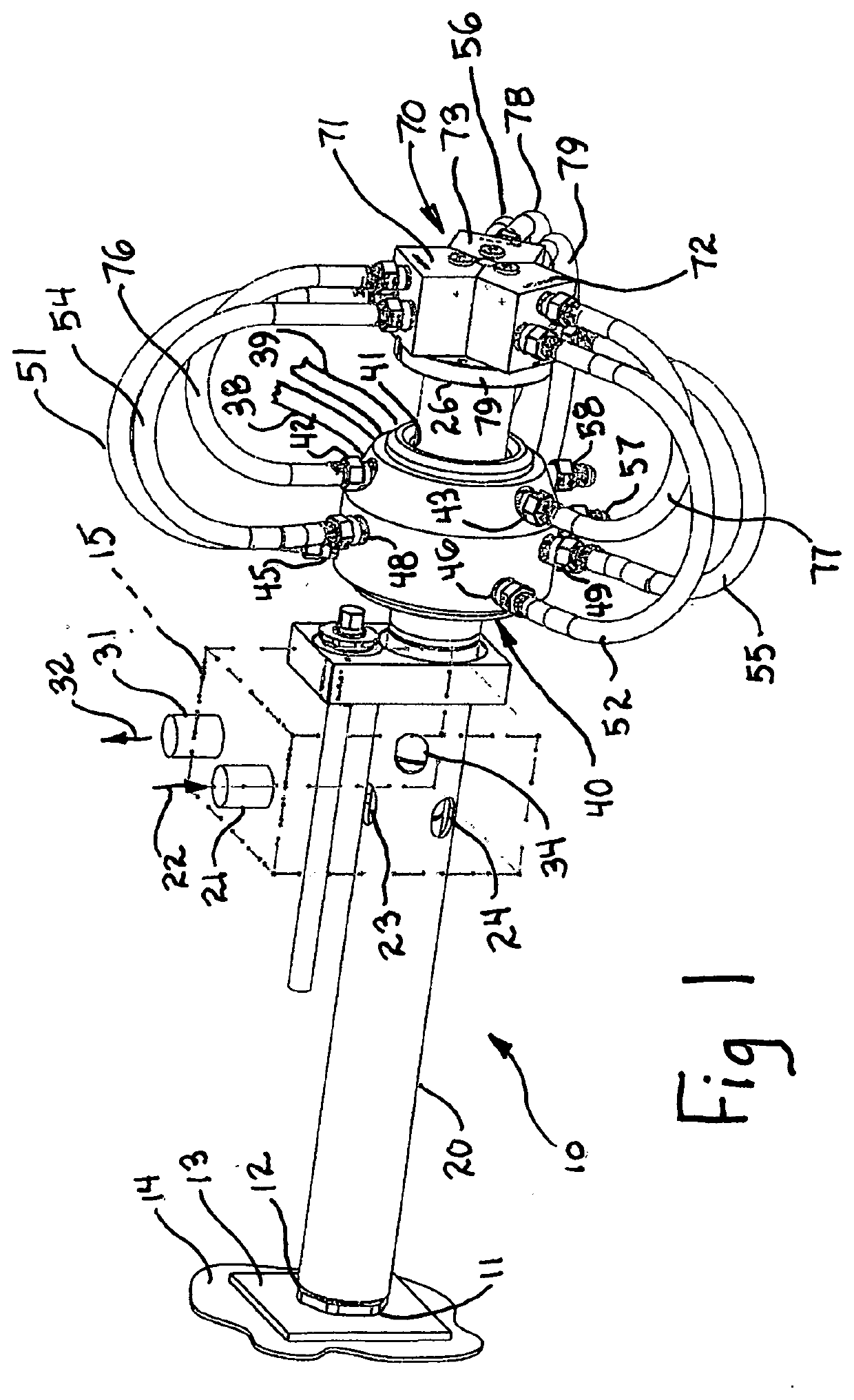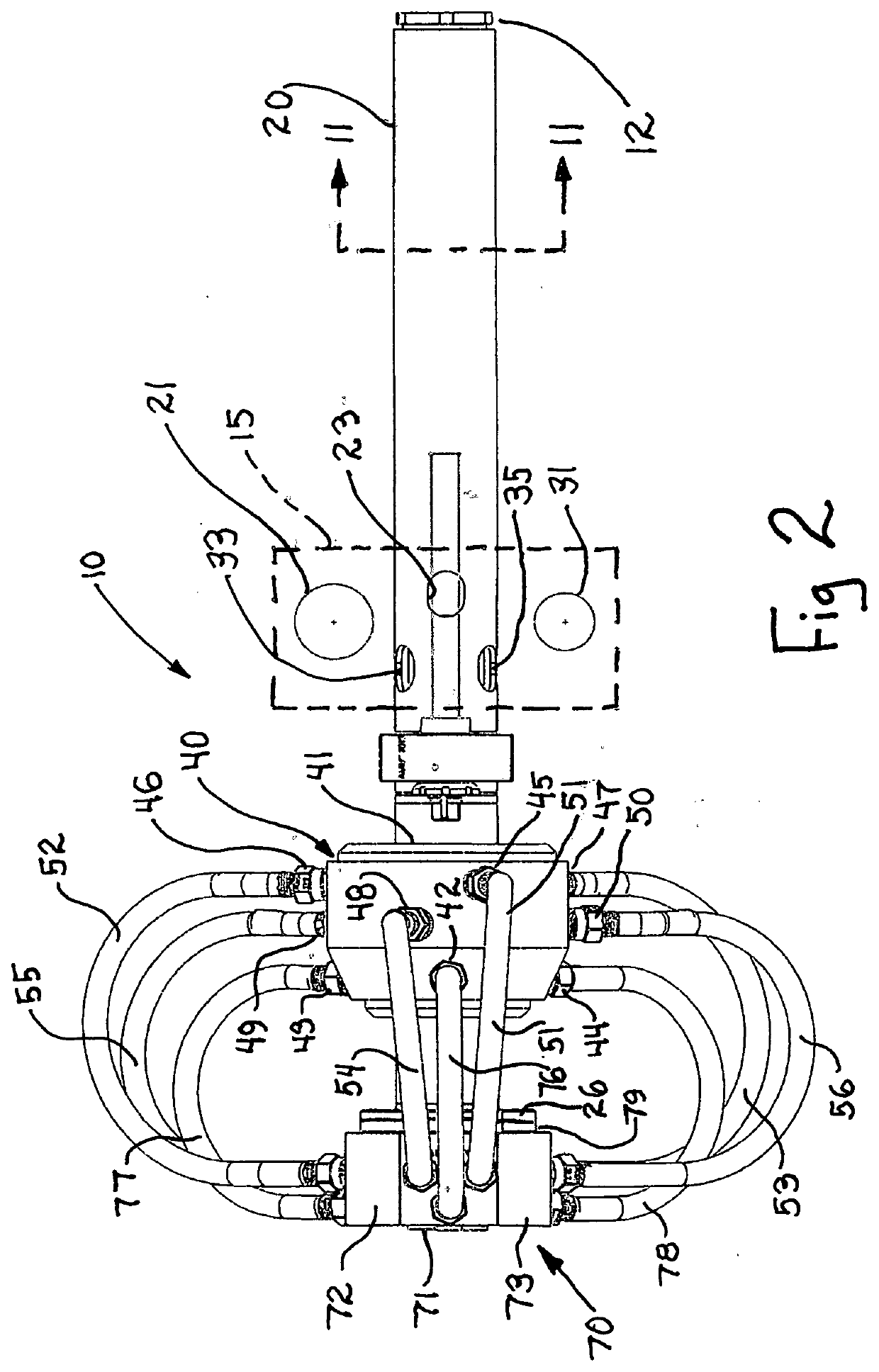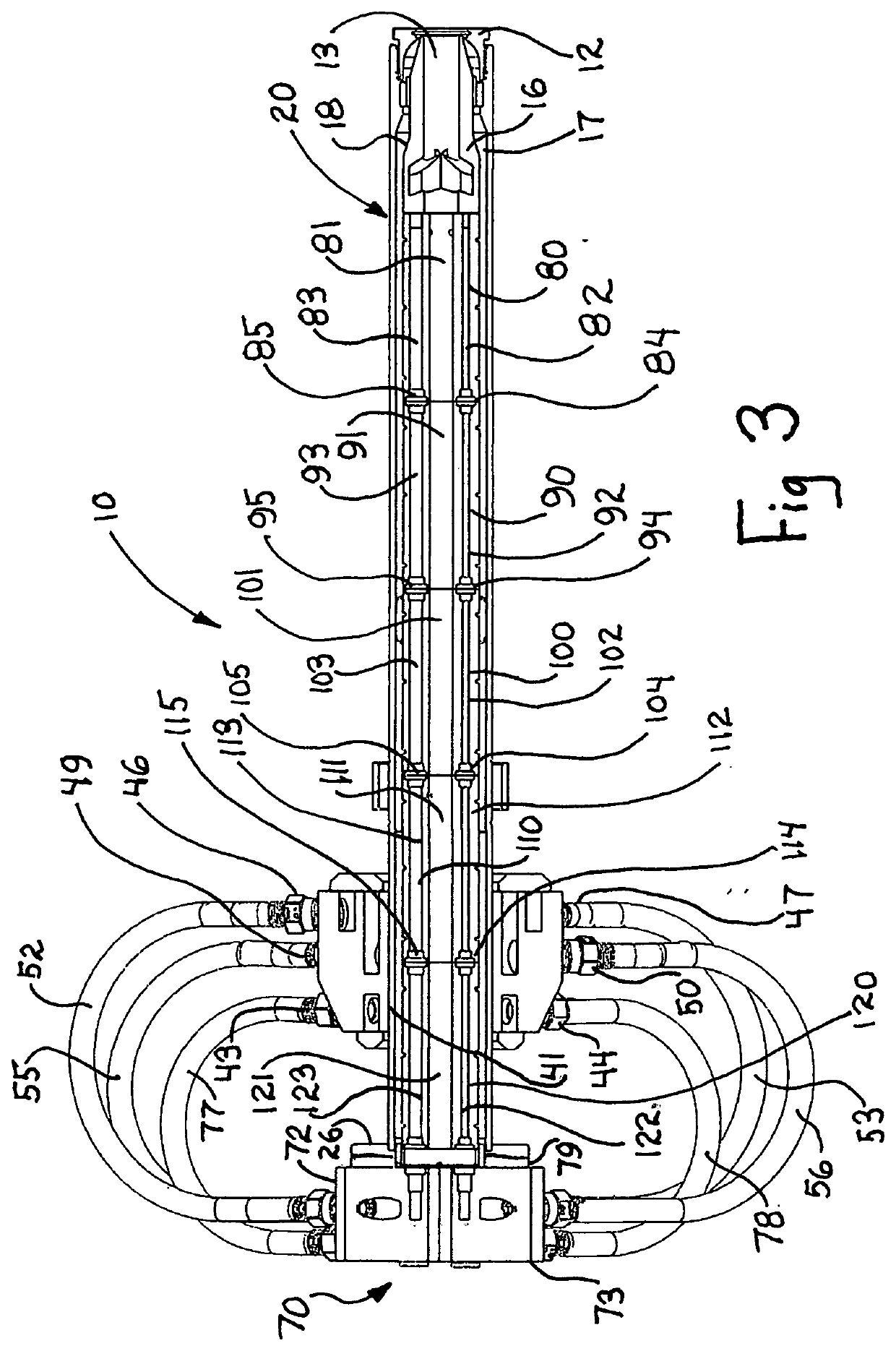Radially acting aftercooler for horizontal continuous casting
a technology of horizontal continuous casting and aftercooler, which is applied in the field of horizontal continuous casting, can solve the problems of graphite sleeves subject to rapid wear, reducing the cooling efficiency of aftercoolers, and graphite lined aftercoolers remain subject to a plurality of significant problems and limitations, so as to reduce the formation of oxides and witness marks on casting, increase cooling efficiency and wear resistance, and avoid oxide formation
- Summary
- Abstract
- Description
- Claims
- Application Information
AI Technical Summary
Benefits of technology
Problems solved by technology
Method used
Image
Examples
Embodiment Construction
[0023]FIG. 1 sets forth a perspective view of a radially acting aftercooler constructed in accordance with the present invention and generally referenced by numeral 10. Aftercooler 10 includes an aftercooler barrel 20 supporting a die collar 12 at one end. Aftercooler barrel 20 further supports a mold holder 15 having a water input coupling 21 and a water output coupling 31. Aftercooler barrel 20 defines a plurality of water input apertures 23, 24 and 25 (aperture 25 not seen) together with a plurality of water output apertures 33, 34 and 35 (apertures 33 and 35 not seen).
[0024]Radially acting aftercooler 10 further includes an intermediate adapter 40 defining a center passage 41 therethrough. Center passage 41 receives a portion of aftercooler barrel 20 extending through center passage 41 and beyond. Intermediate adapter 40 supports a plurality of gas couplers 42, 43 and 44 (coupler 44 not seen). Intermediate adapter 40 further supports a plurality of aftercooler water input couple...
PUM
| Property | Measurement | Unit |
|---|---|---|
| Force | aaaaa | aaaaa |
Abstract
Description
Claims
Application Information
 Login to View More
Login to View More - R&D
- Intellectual Property
- Life Sciences
- Materials
- Tech Scout
- Unparalleled Data Quality
- Higher Quality Content
- 60% Fewer Hallucinations
Browse by: Latest US Patents, China's latest patents, Technical Efficacy Thesaurus, Application Domain, Technology Topic, Popular Technical Reports.
© 2025 PatSnap. All rights reserved.Legal|Privacy policy|Modern Slavery Act Transparency Statement|Sitemap|About US| Contact US: help@patsnap.com



